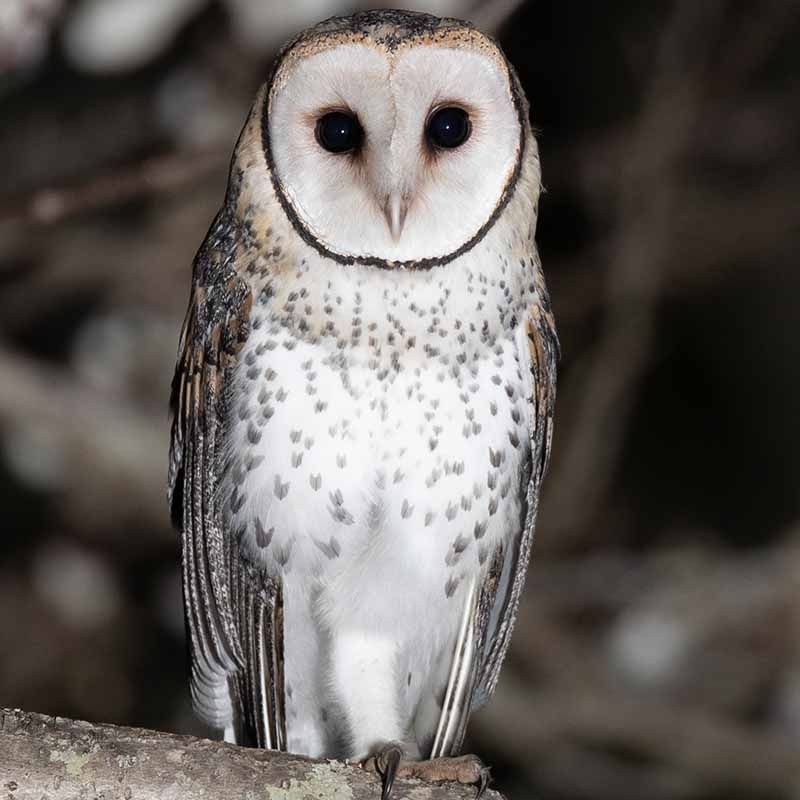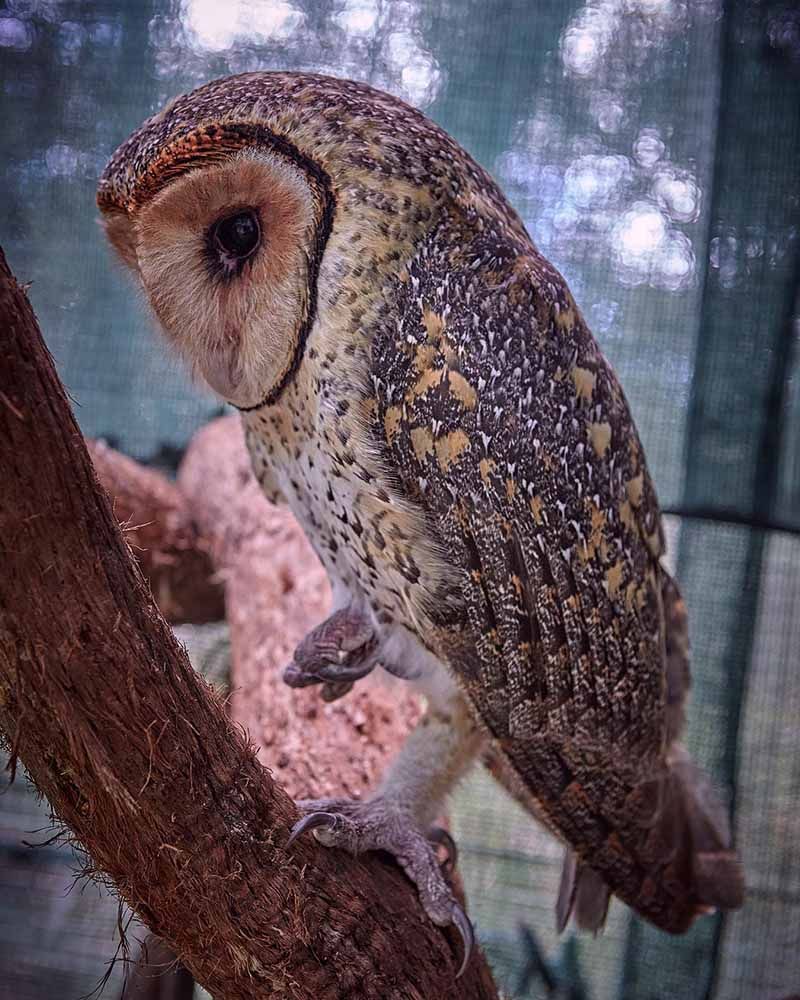Australian Masked Owl
Tyto novaehollandiae

Description
Distribution
Type:
This species is the largest Tyto owl and the second largest nocturnal raptor. Plumage form may be pale, intermediate or dark; the pattern remains similar in each case. The facial disc is chestnut to white, edged with a darker ring and darker around the bill and below the eyes. The upper parts vary from blackish-brown to grey-white and are liberally spotted with grey and white. The underparts are rufous to white, speckled with dark brown. Sexes are similar in plumage, but the females are markedly larger and generally darker than the males. Young owls are white to cream in colour when first fledged. After the first year, they closely resemble the adults but may be more heavily streaked. Tasmanian birds are larger than those on the mainland.
Feed mainly on small mammals, such as rodents, rabbits and bandicoots. Other prey animals include possums, reptiles, birds and insects.
The Tasmanian subspecies of the Masked Owl, Tyto novaehollandiae castenops, is listed as endangered in Tasmania, as a result of habitat loss.



